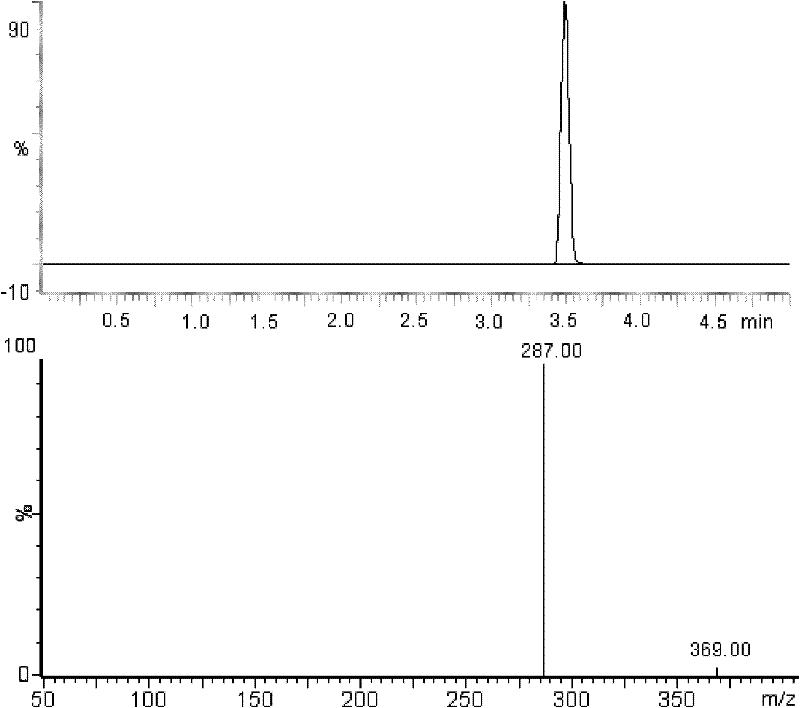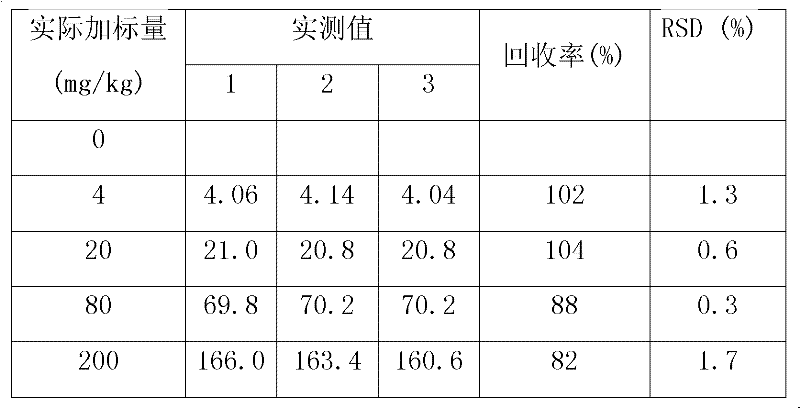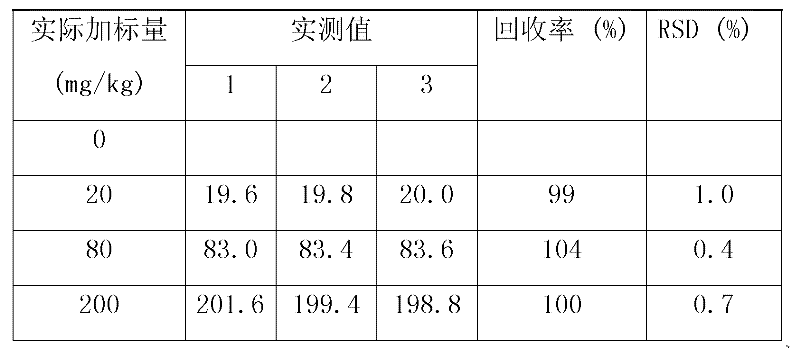Method for Determination of Tris(2-Chloroethyl) Phosphate Content
A method of determination, phosphate technology, applied in the field of analytical chemistry, can solve the problems of easy decomposition, not very suitable for the detection of tris (2-chloroethyl) phosphate, difficult to volatilize, etc., achieve high sensitivity, convenient and fast sample pretreatment , strong selective effect
- Summary
- Abstract
- Description
- Claims
- Application Information
AI Technical Summary
Problems solved by technology
Method used
Image
Examples
Embodiment 1
[0025] Example 1 was carried out as follows.
[0026] 1. Sample Preparation
[0027] Get the blank plastic material that does not contain three (2-chloroethyl) phosphates, mix it with different amounts of three (2-chloroethyl) phosphates, prepare the content of three (2-chloroethyl) phosphates 4mg / kg, 20mg / kg, 80mg / kg, 200mg / kg samples.
[0028] 2. Organic solvent extraction and filtration
[0029] After the sample is cut into pieces, accurately weigh 1.0g into a 50mL sample bottle, accurately add 20mL of acetonitrile, sonicate in an ultrasonic water bath (45°C) for 60min, filter through a 0.22μm filter membrane, and take an appropriate amount into a sample bottle for analysis on the machine .
[0030] 3. Instrument measurement:
[0031] The measurement conditions are as follows:
[0032] Chromatographic column: Agilent Plus C18, 2.1×100mm×3.5μm
[0033] Mobile Phase: A: Acetonitrile
[0034] B: 0.01mol / L ammonium acetate buffer solution
[0035] Mobile phase gradient:...
Embodiment 2
[0054] Carry out with reference to embodiment 1, difference is that sample is variegated decorative cloth, and sample weight is 0.5g, and used organic solvent is acetonitrile, and add-on is 10mL, and the content of three (2-chloroethyl) phosphates in sample is 20mg / kg, 80mg / kg, 200mg / kg. The test results are shown in Table 2.
[0055] The recovery rate of standard addition of table 2 sample
[0056]
Embodiment 3
[0058] Carried out with reference to Example 1, the difference is that the sample is leather, the sample weight is 0.5g, the organic solvent used is acetonitrile, and the addition is 10mL, and the content of tris (2-chloroethyl) phosphate in the sample is 20mg / kg , 80mg / kg, 200mg / kg. The test results are shown in Table 3.
[0059] The recovery rate of standard addition of table 3 sample
[0060]
[0061] As can be seen from the above examples, the method of the present invention can accurately and effectively measure the content of tris (2-chloroethyl) phosphate in plastic products, textiles and leather products.
PUM
 Login to View More
Login to View More Abstract
Description
Claims
Application Information
 Login to View More
Login to View More - R&D
- Intellectual Property
- Life Sciences
- Materials
- Tech Scout
- Unparalleled Data Quality
- Higher Quality Content
- 60% Fewer Hallucinations
Browse by: Latest US Patents, China's latest patents, Technical Efficacy Thesaurus, Application Domain, Technology Topic, Popular Technical Reports.
© 2025 PatSnap. All rights reserved.Legal|Privacy policy|Modern Slavery Act Transparency Statement|Sitemap|About US| Contact US: help@patsnap.com



